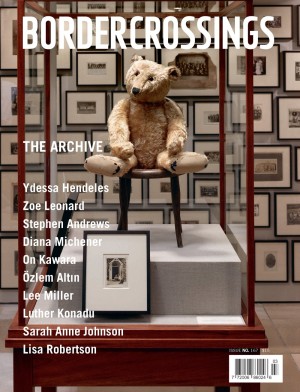Francis Alÿs
Politics of Rehearsal, a black and white video from 2005–2007, lends its name to a noisy, entertaining and resonant mid-career retrospective of Belgian-born artist Francis Alÿs, who currently resides in Mexico City. The video of this name greets the visitor at the entry, and focuses on a female dancer practising a striptease in an empty nightclub while a classical singer warms up her vocal chords and discusses her music with her male accompanist. They start, stop and repeat their actions. Alÿs roams the set with a camera and, in a voice-over, expounds his thesis that “modernity is pornographic” in the “developing” world because it entails “arousal without coupling.” To put quotation marks around “developing,” Alÿs includes archival footage of Harry S. Truman’s 1949 inaugural address in which the newly elected US president introduces his rhetoric of “developed” nations helping to bring “underdeveloped” nations into the modern era.
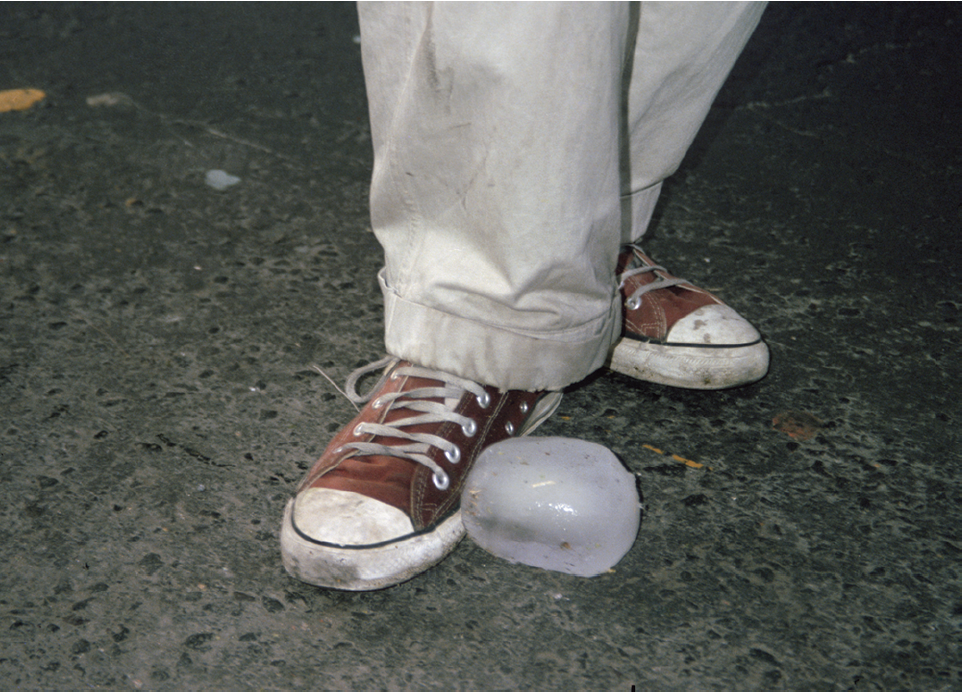
Francis Alÿs, still from Paradox of Praxis 1 (Sometimes Making Something Leads to Nothing), 1997, video. Courtesy David Zwirner, New York.
The meeting ground between the so-called “developed” and “underdeveloped” is fertile terrain for this European artist living in Latin America. Alÿs is deft enough to allow all the attendant paradoxes to play out in works of great humanity, which infuse the poetic with the political and the political with the poetic, creating works that are both site-specific and universal, tiny and monumental.
On the tiny side is the bite-sized Flag, 1990—a work that consists of three pre-masticated wads of chewing gum in green, white and red stuck to the museum’s wall, approximating the Mexican fl ag. The work is embedded with a history of invasion, appropriation and cultural dominance, alluding to Santa Anna’s raids into Texas with his gum-chewing indigenous soldiers, and the reintroduction of this native product to Mexico in the form of an American confection. At the opposite end of the spectrum is the monumental earthwork, When Faith Moves Mountains, 2002—represented by a spectacular video, drawings, notes and a book—that entails 500 people with 500 shovels attempting to move—and who says they didn’t?—an enormous Peruvian sand dune a few inches. Chewing gum and moving sand dunes both add up to equal parts futility and process.
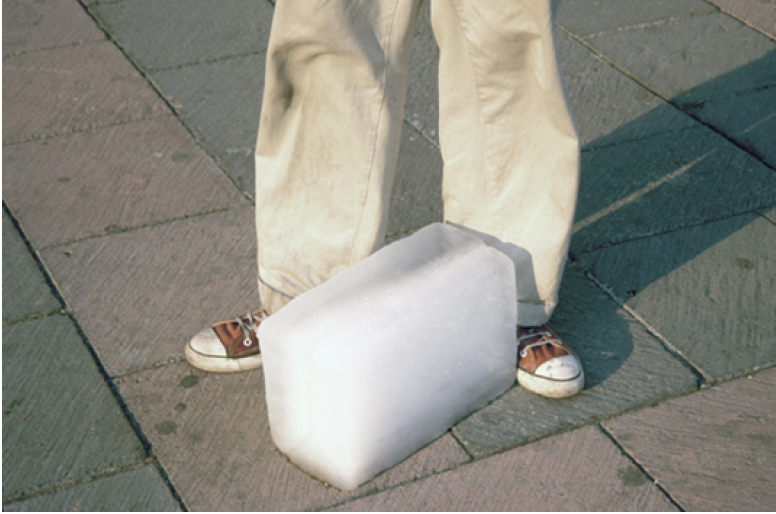
Francis Alÿs, still from Paradox of Praxis 1 (Sometimes Making Something Leads to Nothing), 1997, video. Courtesy David Zwirner, New York.
In fact, the futility of labour to amount to more than itself is one of Alÿs’s central metaphors. Rehearsal I, 1994–2004, a raucous, large-scale, video projection, entails a static camera angle on a humble red Volkswagen beetle—the people’s car, first built in Germany in the 1930s, and whose production continued in Mexico long after it died out elsewhere—which repeatedly attempts to climb a steep, dusty hill in a poor neighbourhood of Tijuana before rolling back down and up the other side of the gully. The driver of the car tries over and over again to mount the hill, as the soundtrack blares the rehearsal of a danzón band warming up the opening bars of song. The video is both charming and melancholic, and, like the soundtrack that pervades the exhibition, deeply memorable.
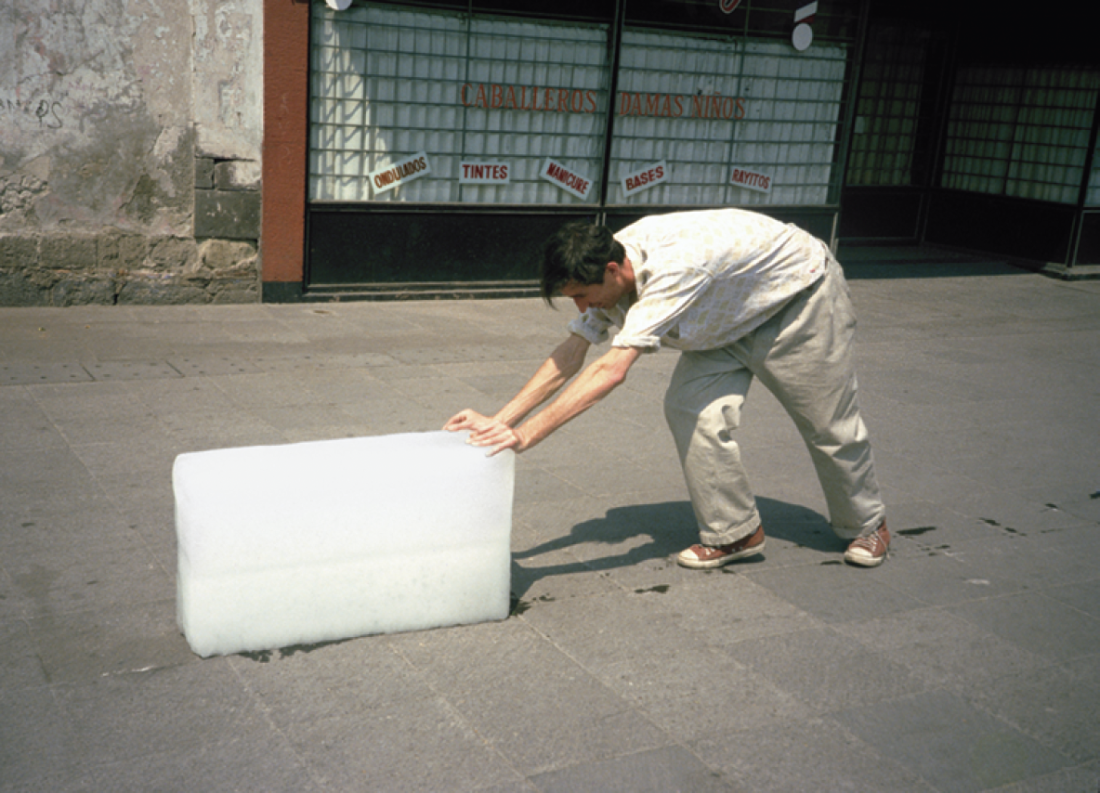
Francis Alÿs, still from Paradox of Praxis 1 (Sometimes Making Something Leads to Nothing), 1997, video. Courtesy David Zwirner, New York.
The video, Paradox of Praxis I, 1997, shows Alÿs pushing a large block of ice through the streets of Mexico City until it dissolves into a puddle. It could easily be seen as a commentary on how, in the developing world, man’s labour amounts to nothing—and, as the artist states, a settling of accounts with Minimalism. At the same time, the longer Alÿs pushes his block of ice, not only does the ice dissolve, but so does the backbreaking effort of pushing it. At the end of the day, all that is left is the fatigued, but impromptu, soccer match of batting around an ice cube in the street on a hot day. The effort amounts to nothing, but so what?
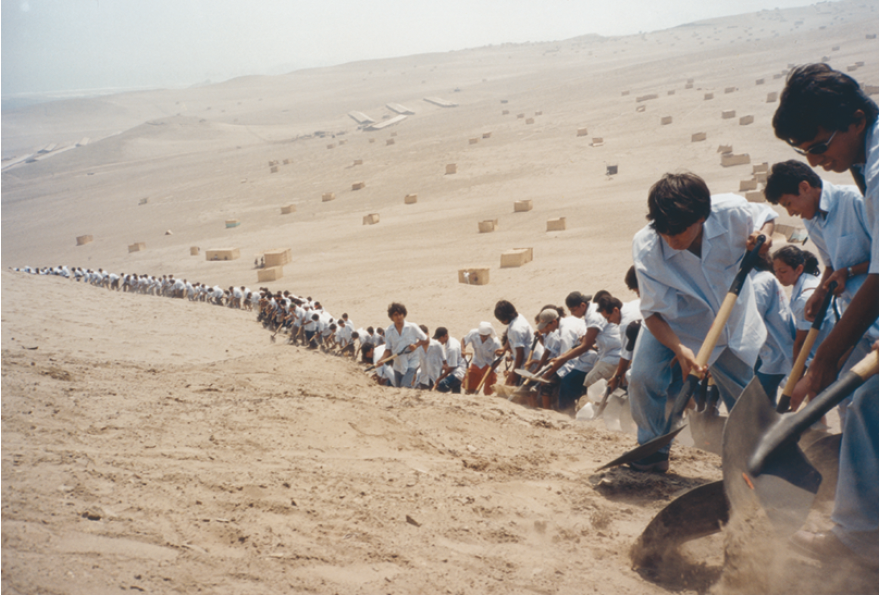
Francis Alÿs in collaboration with Cuauhtémoc Medina and Rafael Ortega, still from When Faith Moves Mountains, 2002, 16mm film transferred to DVD. Courtesy David Zwirner, New York.
This fundamental resistance to modern demands of productivity and the underdog refusal to accept it as a defeat are taken to an extreme in a piece called The Loop, 1997, created for “InSITE,” an exhibition held simultaneously in Tijuana and San Diego in 1997. The work is represented visually by a tiny globe sitting on a shelf several feet above eye level, with a sheath of photocopied e-mails lying on a worktable in the centre of the gallery. These objects chronicle Alÿs’s border crossing from Tijuana to San Diego—just a short transit through the countries’ busiest border checkpoint—by way of a 14-stop journey through Latin America, Australia, Asia and North America before arriving in San Diego fi ve weeks later. Alÿs writes an e-mail from each stop, relating the physical and emotional hardships of this “conceptual” journey. The Loop, like many of Alÿs’s works, is more action-oriented than conceptual, and more private than performance. But also, like many of his works, the story of the piece—with its absurd humour that obliquely addresses the fraught nature of this transit—engenders myth-making and, as a result, is easily absorbed into urban legend.
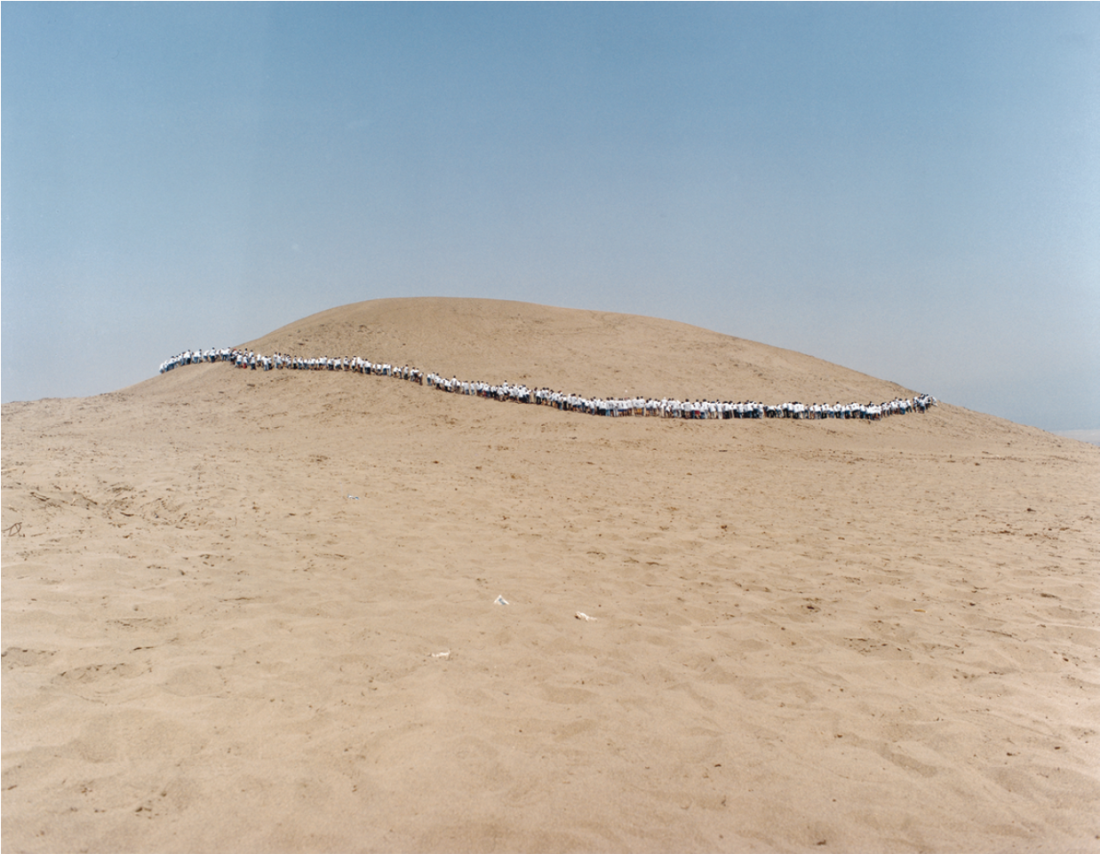
Francis Alÿs in collaboration with Cuauhtémoc Medina and Rafael Ortega, still from When Faith Moves Mountains, 2002, 16mm film transferred to DVD. Courtesy David Zwirner, New York.
The documents for The Loop keep company with the notes, drawings and studies of other works—such as the drawings for a perpetual motion machine the artist has been trying to perfect— under Plexiglas on long work tables. Visitors can pull up a chair and explore Alÿs’s process—or rehearsals—for the works elsewhere in the show. Drawings and postcards relate to the small paintings scattered around the galleries, themselves studies for larger works, often painted by sign painters. The images in these works are mostly of slim, suited men, often seen from the side or rear—making one think of another Belgian painter of suited men, who also made a process of reworking a very personal databank of images and concepts, and who deployed humour to provoke a new way of seeing and thinking. ■
“Francis Alÿs: Politics of Rehearsal” was exhibited at the Hammer Museum in Los Angeles from September 29, 2007, to February 10, 2008.
Susan Emerling is a writer living in Los Angeles.

